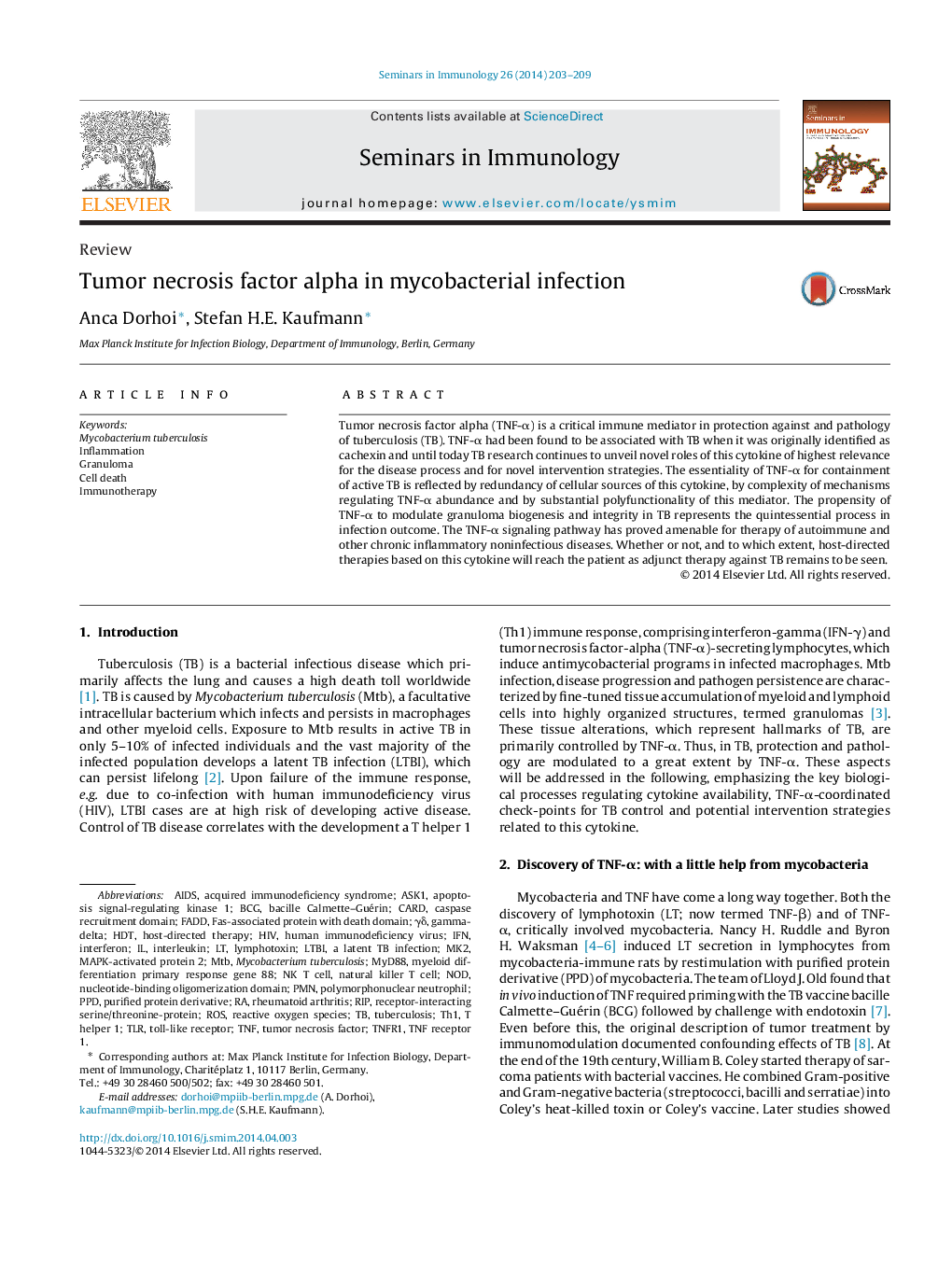| کد مقاله | کد نشریه | سال انتشار | مقاله انگلیسی | نسخه تمام متن |
|---|---|---|---|---|
| 3391293 | 1221026 | 2014 | 7 صفحه PDF | دانلود رایگان |
• In TB, TNF-α is produced primarily by myeloid cells and also by lymphocytes and its availability is regulated by cytokines, enzymes, lipid mediators and miRNAs.
• Local gradients dictate the detrimental or beneficial role of TNF-α by fine-tuning antibacterial capacities and tissue damage.
• Treatment with TNF-α blockers results in TB reactivation.
• Challenges ahead are to uncover networks governing TNF-α availability and cross-regulatory interactions between TNF-α and other immune or nonimmune mediators.
Tumor necrosis factor alpha (TNF-α) is a critical immune mediator in protection against and pathology of tuberculosis (TB). TNF-α had been found to be associated with TB when it was originally identified as cachexin and until today TB research continues to unveil novel roles of this cytokine of highest relevance for the disease process and for novel intervention strategies. The essentiality of TNF-α for containment of active TB is reflected by redundancy of cellular sources of this cytokine, by complexity of mechanisms regulating TNF-α abundance and by substantial polyfunctionality of this mediator. The propensity of TNF-α to modulate granuloma biogenesis and integrity in TB represents the quintessential process in infection outcome. The TNF-α signaling pathway has proved amenable for therapy of autoimmune and other chronic inflammatory noninfectious diseases. Whether or not, and to which extent, host-directed therapies based on this cytokine will reach the patient as adjunct therapy against TB remains to be seen.
Journal: Seminars in Immunology - Volume 26, Issue 3, June 2014, Pages 203–209
